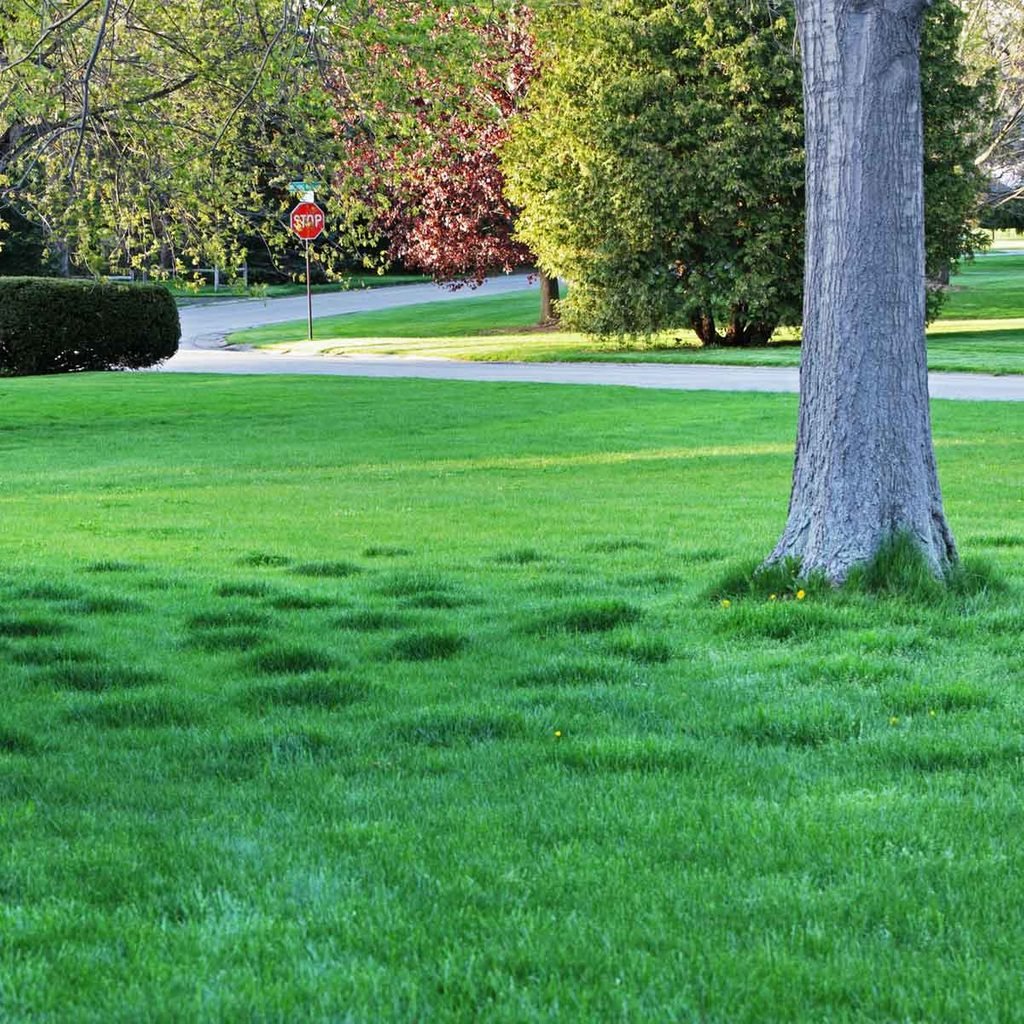Why Are There Thick Patches of Grass On My Lawn?
Updated: Feb. 23, 2024

Even the most well-kept lawn can have a few blemishes. Random patches of thick grass are blotchy imperfections that can be hard to ignore.
Lawns look best when they show off their uniform dark green color. But what happens when trouble shows up in the form of unsightly patches of thick grass? Here’s what you need to know.
On This Page
What Do Thick Patches Look Like?
Thick patches in your lawn are easy to spot. They may be darker or lighter in color and often have a finer or thicker leaf (blade) texture than the surrounding grass. The leaves may also be softer or stiffer to the touch.
What Causes These Thick Patches of Grass?
Patches of thick grass can be caused by several things:
- Regular lawn grasses out of place;
- Bunch-type grassy weeds;
- Dog urine;
- Decomposing organic matter in the soil;
- Leaky sprinkler heads.
How Do You Fix These Thick-Grass Patches?
Regular Lawn Grasses Out of Place
Some lawn grasses that don’t blend well with other grasses, like tall fescue, can invade your lawn and grow in unsightly clumps. This creates an uneven look and possible tripping hazards in an otherwise smooth lawn. Other out-of-place lawn grasses, such as Poa trivialis, annual bluegrass and creeping bentgrass, are common invaders that can grow into thick patches of grass that gradually increase in size over time.
For a non-chemical solution, these patches of unwanted grass can be cut out with a spade or sodcutter. Make sure you remove as many of the roots as possible or you’ll see some of these plants grow back. You can also spray these areas with a nonselective herbicide like glyphosate. This will provide a total kill with little grow-back. Once the patches are removed or killed, you can seed or sod these spots.
Bunch-Type Grassy Weeds
Many bunch-type grass weeds, such as crabgrass, can show up as thick clumps. Crabgrass is yellowish-green and usually shows up in mid-summer, especially along driveways, curbs and sidewalks where soil is warmer and drier. Undesirable lawn grasses and grassy weeds can be dug out and removed by hand, if practical. Spraying a non-selective herbicide will also work, or you can try natural weed killers. After removal, reseeding the dead areas will fill the void left behind.
Dog Urine
Dog urine can also cause areas of your lawn to thicken and turn darker green. The urine acts as a fertilizer, unless the concentration is so high that it kills the grass. Flushing these areas with water can help. Applying fertilizer to the entire lawn to mask the color difference will also work.
Decomposing Organic Matter in the Soil
If the dark, thick patches appear in a circular pattern, you may have a fairy ring. This is a color response caused by decomposing plant material under the soil surface. Mushrooms often pop up in and around these rings of darker grass. To remove, simply bust up the mushrooms with a leaf rake. Fear not — though these fairy rings may look odd, this condition will not harm your grass. An application of fertilizer will mask the dark-green circular pattern so it’s not as noticeable.
Leaky Sprinkler Heads
Leaky sprinkler heads can cause your lawn to look greener and thicker in spots immediately surrounding the leak. Check the sprinkler head and pipe joints for leaks and fix or replace defective sprinkler heads.
